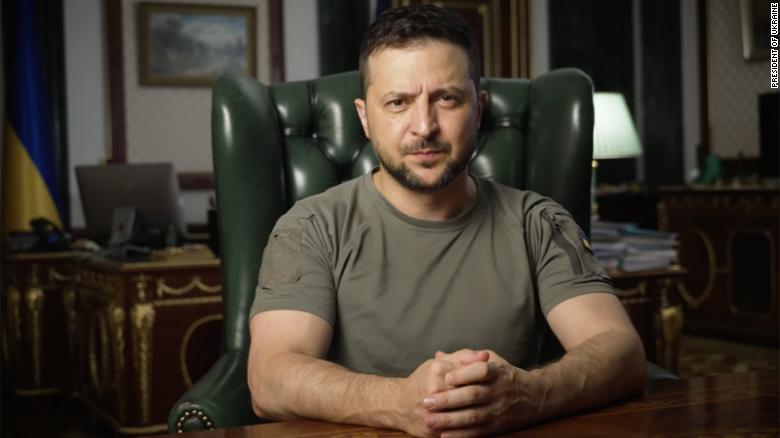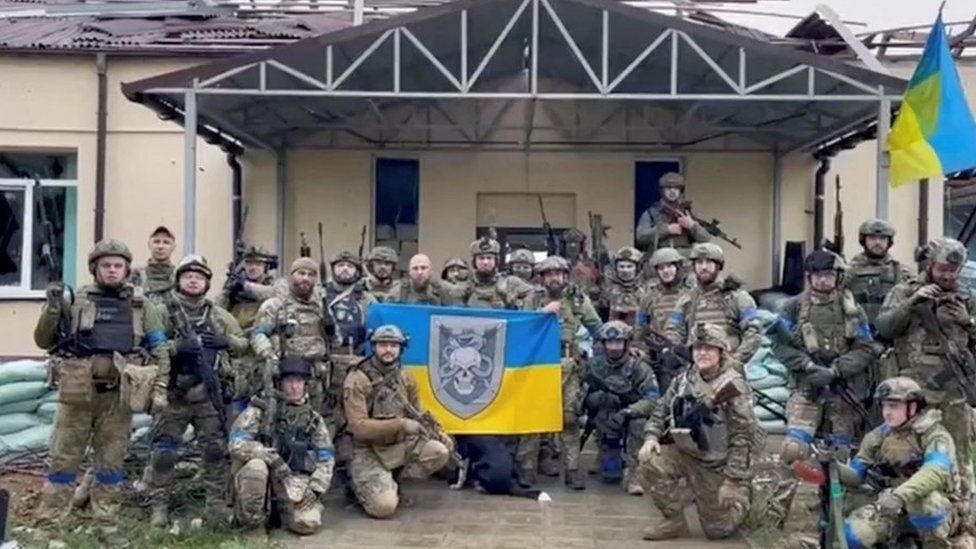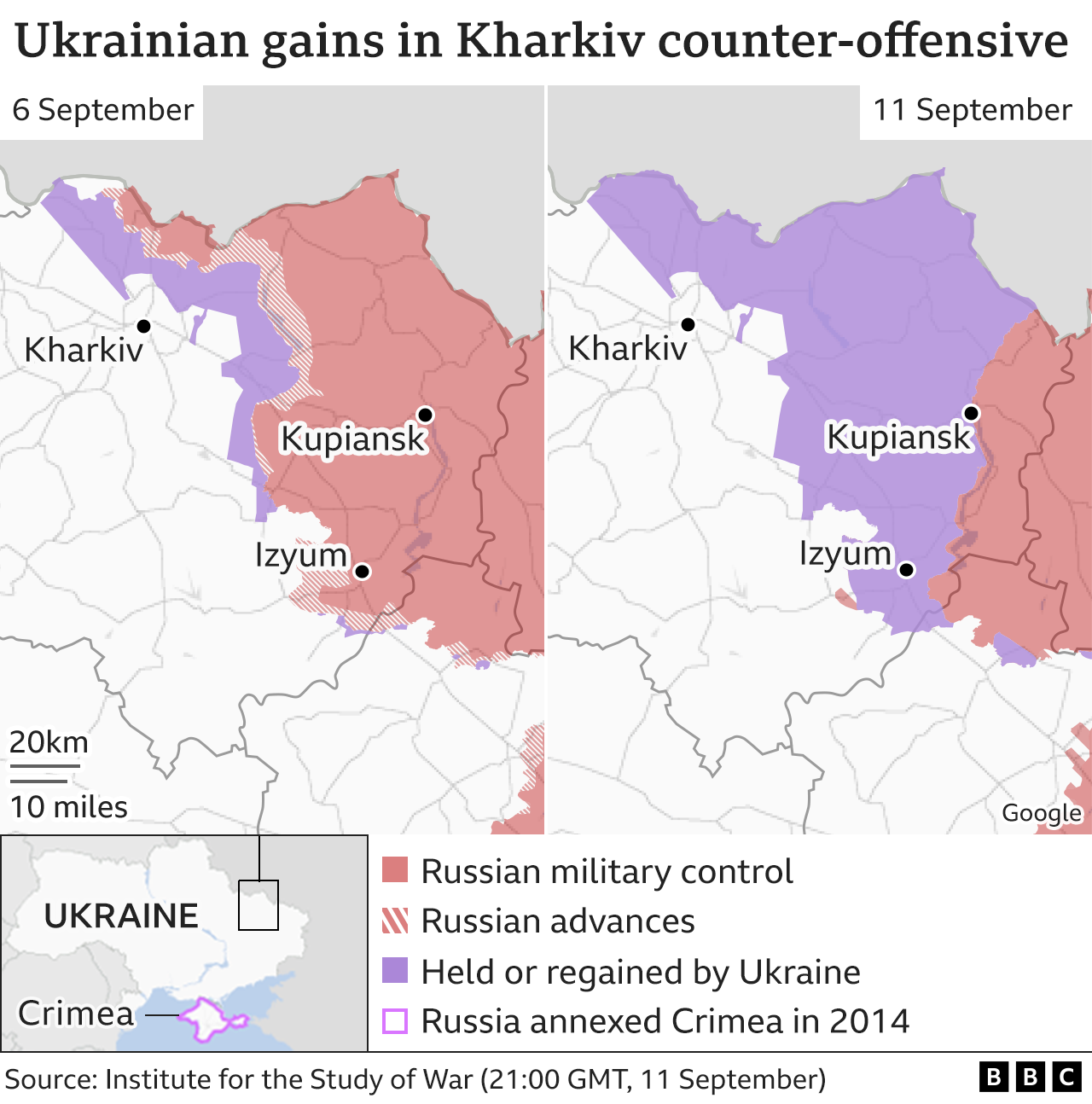
Ukrainian forces have seized even more territory from Russia as they continue their counter-offensive, the country’s president has said.
Volodymyr Zelensky said troops have now retaken more than 6,000 sq km (2,317 sq miles) from Russian control in September, in the east and the south.
Russia has admitted losing key cities in the north-eastern Kharkiv region, in what is seen by some military experts as a potential breakthrough in the war.
Moscow describes its troop withdrawal from the region in recent days as a “regrouping” with the aim of focusing on the Luhansk and Donetsk regions in Ukraine’s east.
That claim has been ridiculed even in Russia, with many social media users there describing the stated pull-out as “shameful”.
Speaking later on Monday, US Secretary of State Antony Blinken said Ukrainian forces had made “significant progress” in their counter-offensive, but added that it was too early to predict the outcome.
“The Russians maintain very significant forces in Ukraine as well as equipment and arms and munitions. They continue to use it indiscriminately against not just the Ukrainian armed forces but civilians and civilian infrastructure as we’ve seen,” Mr Blinken said.
Russian President Vladimir Putin ordered a full-scale invasion of Ukraine on 24 February. Russia still holds about a fifth of the country.
- In his late video address on Monday, President Zelensky said: “From the beginning of September until today, our warriors have already liberated more than 6,000 sq km of the territory of Ukraine – in the east and south”.
“The movement of our troops continues,” he said.
The counter-offensive appears to have been rapid. Last Thursday, President Zelensky said Ukrainian forces had retaken 1,000 sq km, but by Sunday that stated figure had tripled to 3,000 sq km.
Mr Zelensky thanked several of Ukraine’s brigades involved in the counter-offensive, describing their fighters as “true heroes”.
He did not reveal which Ukrainian cities and villages had been liberated.

Russia’s military earlier admitted that its troops had to leave the key cities of Balakliya, Izyum and Kupiansk in the Kharkiv region. Russia now controls only a small eastern part of the region.
Significant – albeit slower – advances by Ukrainian troops have also been reported in the southern Kherson region, which borders with Crimea – a Ukrainian peninsula annexed by Russia in 2014.
UK defence officials say the Ukrainian army’s recent successes will have “significant implications” for Russia’s overall operational design.
However, Kremlin spokesman Dmitry Peskov has insisted that military operations in Ukraine will continue “until all the tasks that were initially set” have been fulfilled.
Russia says its forces have been carrying out strikes in those areas retaken by Ukraine in recent days.

Valerii Marchenko, mayor of Izyum, told the BBC the Ukrainian army was in his city and the state flag had been raised.
The military is now engaged in cleaning up the war-torn city and Ukrainian forces are searching for Russian soldiers potentially hiding in people’s houses.
Mr Marchenko said that after “about 10 days”, residents who had to flee the city would be able to return “safely”.
Russia has been accused of targeting civilian infrastructure in revenge for setbacks on the battlefield.
A wave of missile strikes on Sunday caused massive power cuts across north-eastern Ukraine, leaving tens of thousands of people without electricity and running water for several hours.

ld be foolish not to take those threats seriously.




